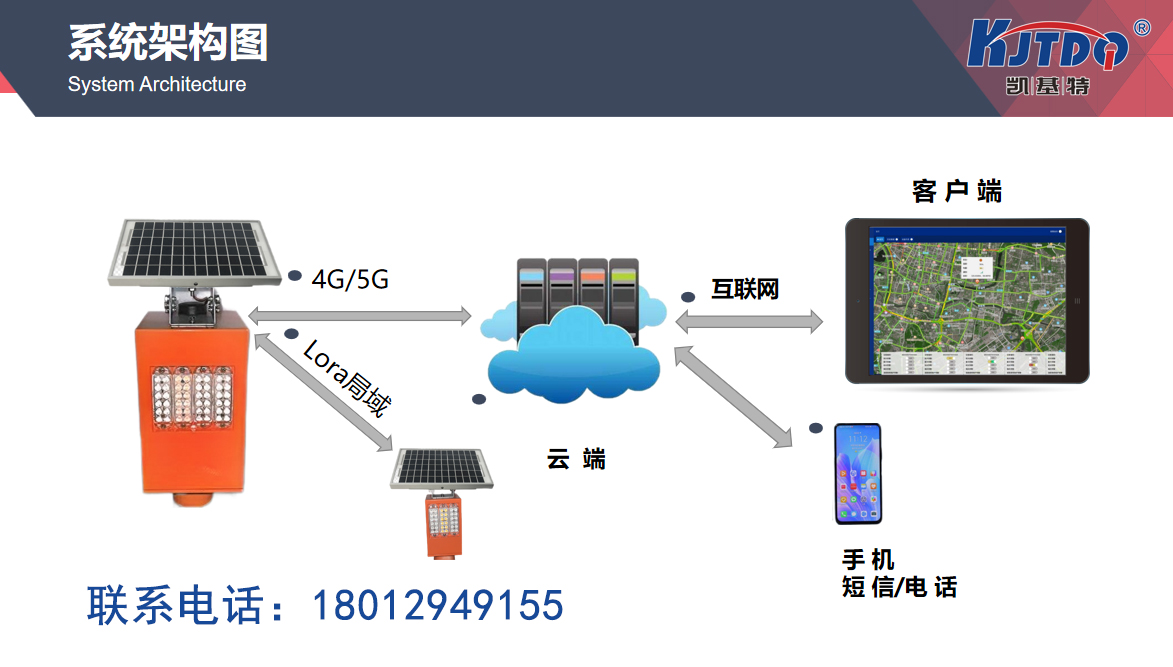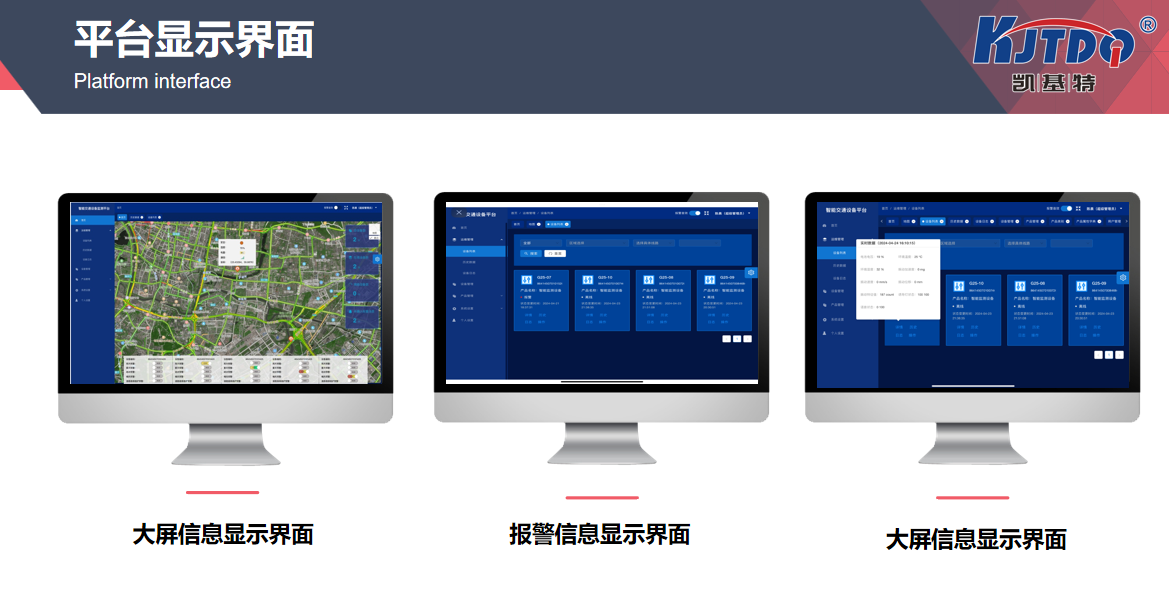On highways, vehicles travel at high speeds and traffic conditions can change rapidly. In order to ensure safety on highways, intelligent warning device technology has become an important tool for modern traffic management. This technology utilizes advanced sensors, data analysis, and real-time communication technology to prevent and reduce traffic accidents and improve driving safety. Through continuous monitoring and intelligent warning, drivers can receive timely alerts before potential dangers arise, taking necessary safety measures to avoid accidents.

The core of intelligent warning device technology for highways lies in real-time monitoring and automatic warning. The system installs sensor networks at key locations on highways to collect real-time data on road conditions, weather information, traffic flow, and more. These sensors include temperature sensors, humidity sensors, radar, and cameras, which can accurately monitor the condition of road surfaces and detect potential hazards such as ice, snow, water accumulation, and obstacles.
The data is transmitted to the central processing platform through wireless networks, and the system utilizes advanced data analysis and artificial intelligence algorithms to process all data in real-time. Once potential safety hazards are detected, such as road icing, traffic congestion, accidents, etc., the system will immediately issue warning signals. Warning information will be conveyed to drivers through electronic displays, traffic signals, and in car navigation systems, ensuring that they can take timely measures to avoid potential dangers.
The technology of intelligent warning devices has been widely applied worldwide. In some countries and regions, this technology is integrated into highway management systems to improve road safety and traffic efficiency. For example, in some European countries, intelligent warning devices have been installed on highways to monitor weather changes and traffic flow. When the system detects ice or water accumulation, the electronic sign will automatically adjust to remind the driver to slow down and reduce the risk of accidents.
The advantage of intelligent warning device technology lies in its efficiency and real-time performance. Compared with traditional traffic management methods, intelligent warning devices can provide more accurate and timely safety reminders, thereby significantly reducing the incidence of accidents. It can not only help reduce traffic accidents, but also improve the efficiency of traffic flow management and alleviate traffic congestion.
In addition, intelligent warning devices also have high adaptability. The system can provide effective support for both peak hour management of highways and safety monitoring under adverse weather conditions. In the future, with the advancement of technology and the expansion of application scope, intelligent warning devices will have more functions, such as intelligent traffic management, autonomous driving support, etc., providing a more comprehensive solution for the safety management of highways.
From my perspective, the promotion and application of intelligent warning device technology on highways is undoubtedly an important measure to improve traffic safety. With the continuous advancement of intelligent transportation technology, these devices can not only provide more accurate warnings, but also seamlessly integrate with other traffic management systems to form a comprehensive safety management network. Although the initial investment may be high, in the long run, this technology will greatly reduce accident rates and maintenance costs, bringing significant improvements to traffic safety and efficiency.
I believe that with the continuous development and popularization of intelligent warning device technology, future highways will become safer and more efficient. Drivers will be able to enjoy a more intelligent driving experience, and highway managers will also be able to better cope with various traffic challenges, providing the public with more reliable travel guarantees.

In summary, the intelligent warning device technology for highways represents the forefront of modern traffic management. Through real-time monitoring and intelligent warning, it significantly improves the safety and operational efficiency of highways. In the future, this technology will continue to develop and improve, injecting more innovative power into the safety management of highways. Let us look forward to the greater contribution of intelligent warning devices in future traffic safety, safeguarding every high-speed driving.
1. How does the intelligent warning device handle the impact of different weather conditions on sensors?
The intelligent warning device was designed taking into account the potential impact of various weather conditions on the sensors. For example, rain, snow, frost, strong winds, etc. can all interfere with the normal operation of sensors. To address these challenges, modern intelligent warning devices are typically equipped with waterproof, dustproof, and wind resistant enclosures to protect sensors from environmental factors. In addition, the device also adopts self calibration technology and environmental compensation algorithms internally to ensure that the sensors can maintain the accuracy of data under different weather conditions. For example, a temperature sensor can automatically adjust its reading to compensate for the impact of external temperature changes on the reading. These measures ensure that intelligent warning devices can still work reliably under various complex climate conditions and provide accurate warning information.
2. Can the intelligent early warning system cooperate with the auto drive system of the vehicle?
The potential for collaboration between intelligent warning systems and autonomous driving technology is enormous. Modern intelligent early warning systems usually have the ability to integrate with auto drive system. By sharing real-time traffic data and warning information, autonomous vehicles can automatically adjust their driving strategies when the system issues an alert. For example, when the intelligent early warning device detects that the road ahead is icy or an accident occurs, it can transmit these information to the auto drive system, which will adjust the speed or change the driving path according to these information to avoid potential dangers. In addition, the intelligent early warning system can be integrated with the sensor data of the auto drive system to provide more accurate road condition judgment and improve the safety and reliability of the auto drive system. This data sharing and collaboration can further enhance the overall traffic safety level of highways.
3. Will the deployment of intelligent warning devices have an impact on the environment?
The deployment of intelligent warning devices usually has a small impact on the environment, but several aspects still need to be considered. Firstly, the installation and maintenance of equipment may involve minor modifications to road infrastructure, although these modifications are generally small-scale, they still need to comply with environmental regulations to reduce interference with the environment. Secondly, although the power demand of the equipment is relatively low, it still needs to ensure a stable supply of power, usually by using solar energy or low-energy batteries to reduce dependence on traditional power resources. In addition, the materials and production process of the equipment should also comply with environmental standards, minimizing the consumption of natural resources and environmental pollution. Finally, the practical application of intelligent warning devices can help reduce environmental pollution and energy waste caused by traffic accidents. In the long run, the deployment of equipment can help improve overall traffic management efficiency and reduce negative impacts on the environment. Therefore, reasonable environmental protection measures and technological choices can minimize the impact on the environment when installing and using intelligent warning devices.